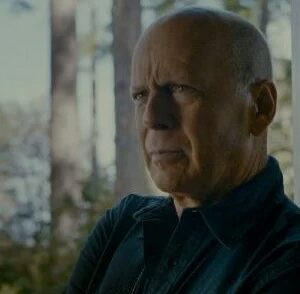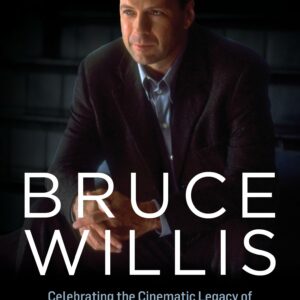Introduction
Bruce Willis, a titan of action cinema, is perhaps best known for his iconic role as John McClane in the “Die Hard” series. However, it is his portrayal of Korben Dallas in Luc Besson’s The Fifth Element that offers a fascinating intersection of music, sound design, and cinematic storytelling. Released in 1997, The Fifth Element is not merely a science fiction film; it is an audacious blend of genres that seamlessly incorporates a diverse array of musical styles. The significance of music and sound design in this film cannot be understated, as they serve as pivotal elements in driving the narrative forward, shaping character development, and creating a uniquely immersive experience for the audience.
In exploring the intricacies of The Fifth Element’s soundtrack, we will delve into the fusion of musical genres, the impact of music on character development, the role of sound design as a narrative tool, the influence on the sci-fi genre, and the cultural significance and reception of the film’s music. Through this lens, we can gain a deeper appreciation of how the film’s auditory elements complement its visual grandeur and contribute to its lasting legacy.
The Fusion of Genres in Soundtrack
One of the most remarkable aspects of The Fifth Element is its eclectic mix of musical styles. The film’s composer, Eric Serra, masterfully fuses opera, techno, and world music to create a soundtrack that reflects the film’s vibrant and surreal atmosphere. This fusion of genres is not merely an artistic choice; it is essential to the film’s identity.
Opera and its Emotional Weight
The film opens with a haunting operatic piece, performed by the alien diva Plavalaguna, which establishes an immediate emotional connection with the audience. This operatic performance is not just a moment of spectacle; it encapsulates the film’s thematic depth and the struggle for humanity. The contrast between the grandiosity of opera and the futuristic setting amplifies the surreal quality of the film. As Plavalaguna sings, the audience is drawn into a world that is both fantastical and grounded in deep human emotion.
Techno and the Futuristic Soundscape
In juxtaposition with the opera, the techno elements of the soundtrack contribute to the film’s high-energy sequences. The use of electronic beats during action scenes infuses the narrative with a sense of urgency and excitement. For instance, the chase through the streets of New York is underscored by pulsating techno music that heightens the adrenaline of the moment. This blending of genres not only enhances the film’s aesthetic appeal but also reinforces its underlying themes of chaos and order in a dystopian future.
World Music and Global Influence
Moreover, The Fifth Element incorporates world music influences that echo its multicultural cast and settings. The eclectic soundtrack serves as a reminder of the film’s global perspective, uniting various cultural sounds to reflect the universality of its themes. The diverse musical influences create a soundscape that resonates with a broad audience, further enriching the film’s narrative.
The fusion of genres in The Fifth Element exemplifies how music can transcend cultural boundaries, providing a universal language that enhances storytelling. The vibrant soundtrack serves as a character in its own right, shaping the film’s identity and transporting the audience into its unique world.
Impact of Music on Character Development
Music in The Fifth Element plays a pivotal role in character development, often reflecting the emotional journeys of its central figures. The choices made in the soundtrack highlight the characters’ internal struggles and growth throughout the film.
Leeloo’s Operatic Performance
One of the most striking examples of music’s impact on character development is Leeloo’s operatic performance. As the film’s protagonist, Leeloo is a symbol of hope and the embodiment of the “Fifth Element.” Her aria, filled with both beauty and anguish, serves as a crucial moment of connection between her and Korben Dallas. The hauntingly beautiful melody mirrors her struggle to understand humanity, and the operatic delivery elevates her character’s arc from a mere savior to a complex being with profound emotional depth.
This moment resonates deeply with the audience, allowing them to empathize with Leeloo’s vulnerability and the weight of her responsibilities. Through this musical interlude, the film transcends the typical action genre, inviting viewers to engage with its characters on a more profound emotional level.
Thematic Resonance with Korben Dallas
Korben Dallas, portrayed by Bruce Willis, undergoes a significant transformation throughout the film. Initially introduced as a reluctant hero, his character development is accentuated by the soundtrack. As he grapples with his past and steps into the role of a savior, the music underscores his emotional journey. The soundtrack highlights key moments of realization and bravery, showcasing how music can enhance the viewer’s connection to a character’s evolution.
The musical choices in pivotal scenes serve to reinforce the narrative, allowing the audience to feel the weight of the characters’ experiences. Through these auditory cues, The Fifth Element effectively weaves music into the fabric of its storytelling, creating a richer and more immersive experience.
Sound Design as a Narrative Tool
While music forms the backbone of The Fifth Element’s soundtrack, sound design plays an equally critical role in shaping the film’s narrative. The meticulous attention to sound effects creates an immersive experience that enhances the visual storytelling.
World-Building through Sound
The sound design in The Fifth Element contributes significantly to world-building. The film’s futuristic setting is brought to life through a careful selection of sound effects that evoke a sense of otherworldliness. From the hum of flying cars to the cacophony of alien markets, the soundscape immerses the audience in a bustling, vibrant universe. These auditory elements complement the film’s visuals, creating a cohesive and believable world.
For instance, the sounds of the Mangalore ships and the futuristic weaponry provide an auditory backdrop that reinforces the film’s action sequences. The integration of sound design into the narrative not only enhances the viewer’s experience but also deepens their understanding of the film’s universe.
Complementing Visual Storytelling
Sound effects also serve to amplify emotional moments in the film. The use of silence in critical scenes, such as the aftermath of battles or moments of introspection, allows the audience to absorb the gravity of the situation. This contrast between sound and silence is a powerful storytelling technique that heightens emotional resonance.
In action sequences, sound effects are meticulously crafted to match the intensity of the visuals. The explosive sound design during battles contributes to the overall adrenaline of the film, drawing viewers into the chaos and urgency of the moment. The harmonious relationship between sound and visuals in The Fifth Element showcases how sound design can elevate cinematic storytelling.
Influence on the Sci-Fi Genre
The Fifth Element stands as a landmark in the science fiction genre, not only for its groundbreaking visuals but also for its innovative use of music and sound. The soundtrack set a precedent for future sci-fi films, influencing how music is utilized to enhance narrative and emotional impact.
Setting a Precedent for Sci-Fi Soundtracks
Before The Fifth Element, soundtracks in science fiction films often leaned heavily on orchestral compositions or electronic music with little diversity. However, Besson’s film broke the mold by incorporating an eclectic mix of genres that captured the film’s whimsical yet serious tone. The innovative soundtrack has inspired subsequent films to explore more diverse musical landscapes, paving the way for unique auditory experiences.
Films such as Blade Runner 2049 and The Matrix have adopted similar approaches, using music not just as a background element but as a vital component of storytelling. The influence of The Fifth Element can be seen in how contemporary filmmakers experiment with sound, blending genres to create unique atmospheres and enhance narrative depth.
Emulation by Other Directors
Moreover, directors like Edgar Wright and Christopher Nolan have drawn inspiration from The Fifth Element’s soundtrack, utilizing music to create emotional arcs and maintain audience engagement. The impact of the film’s music can be felt across genres, demonstrating how a well-crafted soundtrack can elevate a film’s status and influence future filmmakers.
By setting a new standard for soundtracks in sci-fi films, The Fifth Element has cemented its place in cinematic history as a film that transcends genre boundaries through its innovative use of music and sound design.
Cultural Significance and Reception
Upon its release, The Fifth Element received a mixed reception from critics, but its soundtrack garnered significant praise. Over the years, the film has achieved cult status, with its music playing a central role in its enduring popularity.
Critical Reception of the Soundtrack
Critics lauded the boldness of Eric Serra’s score, noting how the eclectic mix of styles complemented the film’s visual flair. The operatic performances, combined with the techno beats, were highlighted as innovative choices that set the film apart from its contemporaries. The soundtrack was seen as a crucial element that added layers of meaning to the narrative and elevated the film’s artistic ambitions.
Audience Reactions and Cult Status
As The Fifth Element found its footing in popular culture, audience reactions to the soundtrack contributed to its cult status. Fans of the film often cite the music as one of its most memorable aspects, recalling specific scenes and the emotions they evoke. The operatic performance of Plavalaguna, in particular, has become iconic, often referenced in discussions about the film.
Moreover, the soundtrack’s cultural significance extends beyond the film itself. Its eclectic nature has made it a subject of analysis in music and film studies, showcasing how sound design can play a pivotal role in cinematic storytelling. The film’s music continues to resonate with audiences, encouraging new generations to explore its unique blend of genres and the emotional depth it brings to the narrative.
Conclusion
In conclusion, the music and sound design in Bruce Willis’s The Fifth Element are integral to the film’s storytelling. The fusion of genres creates a vibrant and surreal atmosphere, enhancing character development and serving as a narrative tool that immerses the audience in the film’s world. The soundtrack not only sets a precedent for future sci-fi films but also contributes to the film’s cultural significance and lasting legacy.
As viewers revisit The Fifth Element, they are encouraged to engage with its soundtrack on a deeper level, recognizing how music and sound design enhance the film’s narrative complexity. This exploration of the film’s auditory elements reveals the profound impact that music can have on storytelling, inviting audiences to experience the film anew and appreciate its artistic brilliance. The legacy of The Fifth Element endures, reminding us of the power of sound to shape our understanding of film and the stories they tell.





